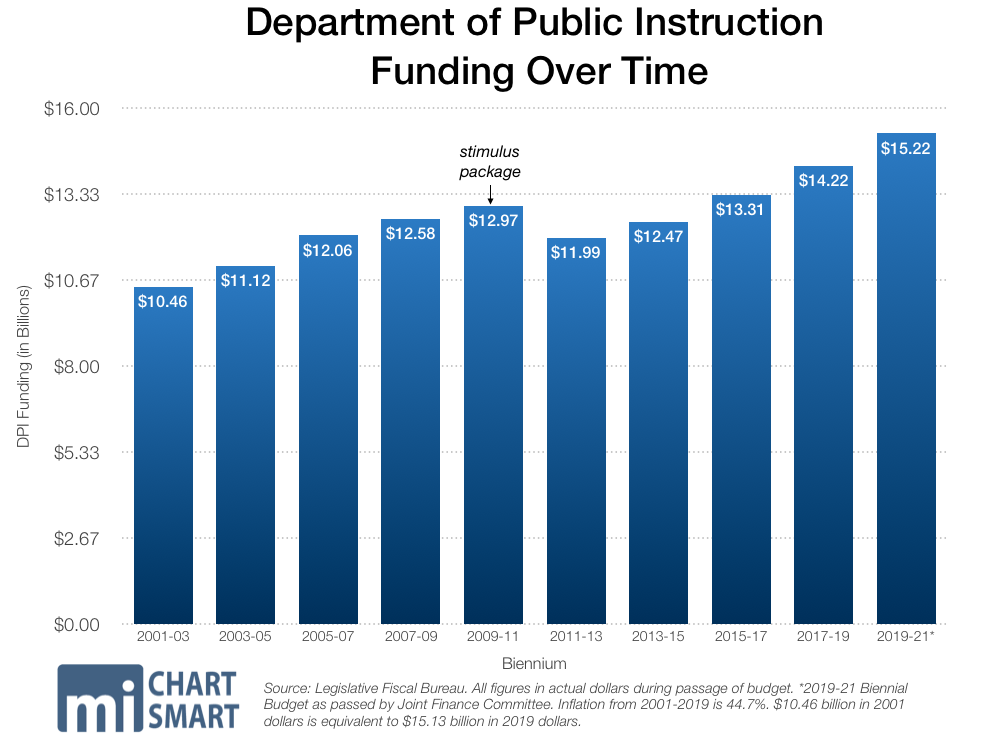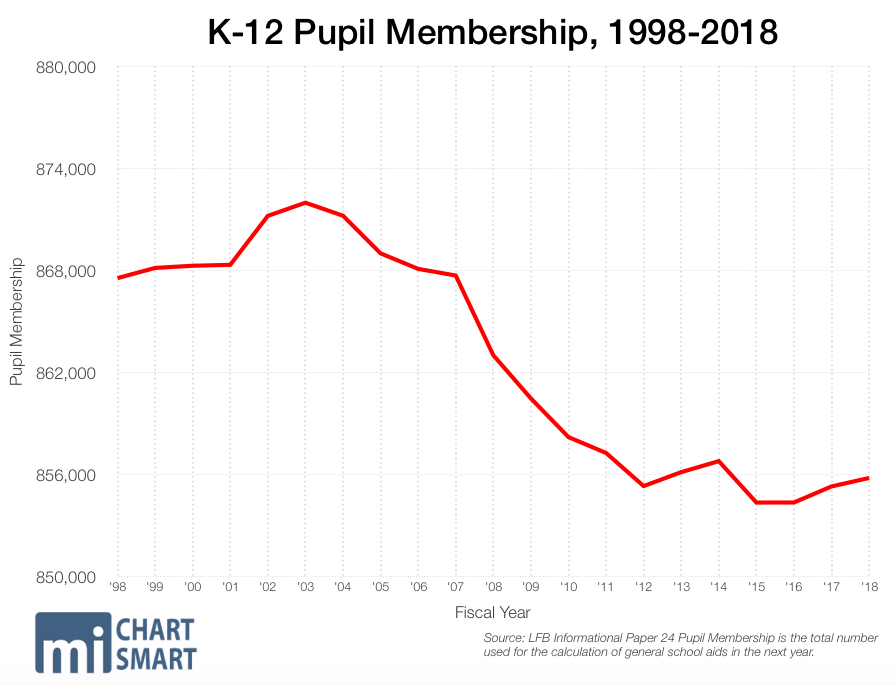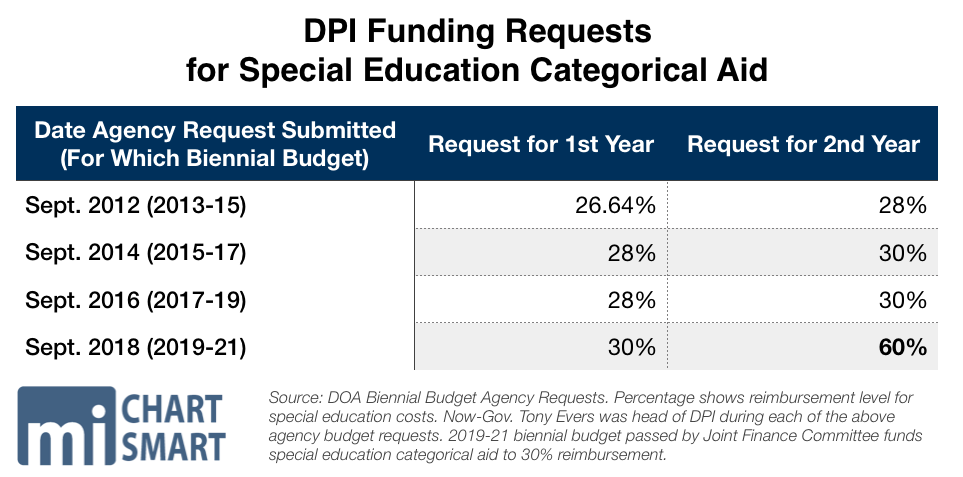 What Cut? GOP Budget Adds $665 Million to K-12 Education #wiright #wipolitics #wiedu Click To Tweet
What Cut? GOP Budget Adds $665 Million to K-12 Education #wiright #wipolitics #wiedu Click To Tweet
June 25, 2019
By Ola Lisowski
A group of protesters led by the Wisconsin Public Education Network spent the weekend marching to Madison, calling for more education funding and rallying against the Joint Finance Committee (JFC) budget package. Today, they’ll arrive at the State Capitol after a 60-mile march from Palmyra, Wisconsin.
The group has the support of DPI State Superintendent Carolyn Stafford-Taylor, but they’ve spent all weekend spreading falsehoods about the education funding package included in the JFC budget. To have a truly honest debate, let’s cover some basic facts about education finance.
- A $665 million increase to the Department of Public Instruction is not a cut. We know math scores are pretty low in this state, but this one comes down to plain arithmetic. DPI will receive $665 million more over current spending levels in this budget, according to the nonpartisan Legislative Fiscal Bureau. The group claims that the spending “doesn’t even keep pace with inflation,” but funding to DPI will increase by 4.6 percent from the base. The rate of inflation from 2017 to 2019 is 4.5 percent.

- Public school enrollment is declining. State support to K-12 education has steadily increased since the recession, and student enrollment has slowly trended downward. Wisconsin taxpayers are spending more for fewer students.

- Honest budget comparisons cannot use the stimulus-inflated funding levels in 2011 as a base year. The Wisconsin Budget Project claims that “the state provided $3.5 billion less in state aid to public schools than it would have if state aid stayed at 2011 levels.” That figure has been parroted by numerous other organizations and has appeared in material for the 60-mile march. But to use 2011 as a base year is to blatantly distort facts. That budget was padded with $3.5 billion in one-time federal stimulus dollars, and over $552 million in federal money was used to backfill state aid funding.

- The special education reimbursement level in JFC’s budget is the same that Evers requested before running for Governor. Before he had his eyes on the East Wing, then-State Superintendent Tony Evers asked the state to reach 30 percent reimbursement for special education costs. The JFC budget does exactly that. It wasn’t until Evers ramped up his run for Governor that he doubled the ask to 60 percent.

- Voucher students produce strong results – oftentimes stronger than their public school peers. “Unaccountable voucher schools” easily rolls off the tongue of many legislators, but the premise itself is wrong. If a family isn’t happy with a voucher school, they can vote with their feet and leave the school. That’s accountability in the form of direct action. Besides that, voucher students in all three school choice programs earned higher ACT scores than public school students on the most recent round of state tests. Despite what detractors say, dozens of studies have shown that school choice leads to positive academic and social benefits.
